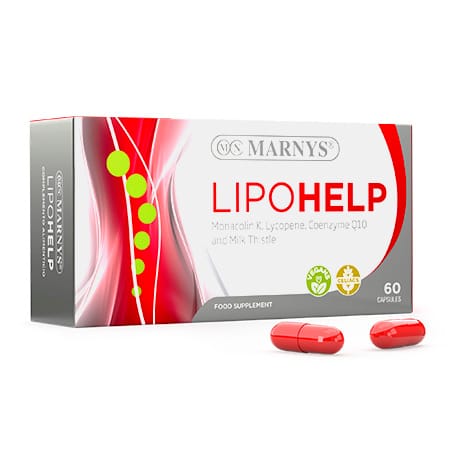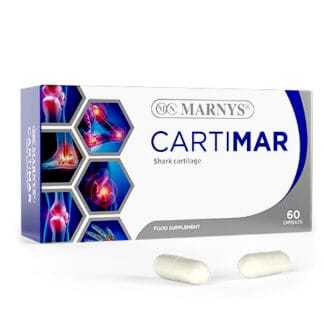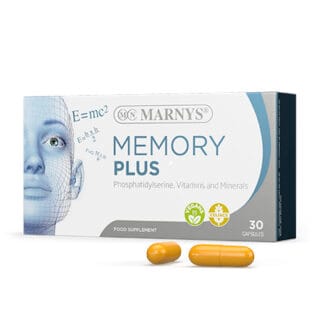Description
Information about MARNYS Lipohelp, 60 capsules
Lipohelp is a supplement formulated for cardiovascular health care.
Properties of the Lipohelp ingredients
🔹Red Yeast Rice
Red Yeast Rice is obtained from the fermentation of the yeast Monascus purpureus and is widely used in traditional Chinese medicine for its content of monacolin K, a component that contributes to cardiovascular Milk thistle
🔹Milk thistle
Milk thistle (standardised to contain 80% silymarin), contributes to maintenance of normal liver function and normal functioning of the cardiovascular system (EFSA ON HOLD 3584,3585,3821,4141,4481; Monografía de la EMA).
Black pepper (standardised to 7% piperine) contributes to the maintenance of normal liver function (EFSA ON HOLD 2113).
🔹Acerola
Acerola (Malpighia emarginata) is a fruit found throughout Central America and the northern part of South America, well known as one of the best natural sources of vitamin C. Lipohelp ensures a minimum of 25% vitamin C content in Acerola.
🔹Citrus Bioflavonoids
Citrus bioflavonoids (minimum content of 60% flavonoids expressed as Hesperidin), are plant substances often found in citrus peel, including rutin, quercetin and hesperidin.
🔹Pectin and Policosanol
Pectin and Policosanol (from sugar cane, standardised to 50%) are dietary fibres.
🔹Coenzyme Q10 and Lycopene
Coenzyme Q10, also known as ubiquinone, and lycopene, from the tomato plant or Solanum lycopersicum, are useful for good circulatory and cardiovascular function.
Who is Lipohelp recommended for?
Lipohelp is an excellent supplement for adults:
- For those who want to help the normal functioning of the cardiovascular and hepatic systems.
- To support their normal lipid profile.
Advantages of Lipohelp
✓ Suitable for vegans.
✓ Suitable for coeliacs.
✓ Vegetable capsules.

CARDIOVASCULAR

LIPID PROFILE
To Know More
Cholesterol and cardiovascular risk
Did you know that cardiovascular disease (CVD) causes a mortality of 4 million people in Europe each year? Women represent 55% and men 45% of this number, although deaths associated with cardiovascular events under the age of 65 are more common in men.
Bad cholesterol (LDL) and good cholesterol (HDL) – h3
LDL or low-density lipoprotein is commonly called ” bad cholesterol “. This is due to the fact that the higher the amount of LDL present in the blood, the higher the risk of accumulation in the arteries, causing atherosclerotic plaques that contribute to vascular diseases.
HDL or high-density lipoproteins are known as “good cholesterol”, as they carry the cholesterol stored in the plaque to the liver, from where it is removed through the bile and intestine.
What happens if I have high bad cholesterol (LDL)?
LDL-cholesterol is stored in the walls of the arteries, causing atheromatous plaques that can obstruct normal blood flow. When these plaques break off and move into the systemic circulation, they can block small arteries or capillaries, increasing the risk of heart attacks and strokes.
This disorder is called atherosclerosis and is caused by ageing, genetic predisposition and lifestyle. Eating a diet low in saturated and trans fats, regular exercise and not smoking are some of the factors that can help keep LDL in check.
How do I know if my good cholesterol (HDL) is high?
Cardiovascular risk is measured by a number of indicators, including HDL; however, it must be evaluated along with other clinical measurements by a doctor. It is not only the serum quantity of HDL that is important, but also the quality of these lipoproteins, which among other factors is also genetically determined.
How does red yeast rice lower cholesterol?
Red Yeast Rice is obtained by fermenting the yeast, Monascus purpureus, on rice. Scientific evidence suggests that monacolin from Red Yeast Rice may support a normal lipid profile. Also, red yeast rice contains sterols, isoflavones and monounsaturated fatty acids, which support cardiovascular wellbeing.
- Bahmani, M. et al. Silybum marianum: Beyond Hepatoprotection. Journal of Evidence-Based
- Brown, L. et al. Cholesterol-lowering effects of dietary fiber: a meta-analysis. Am J Clin Nutr. 1999
- Catapano, A. et al. 2016 ESC/EAS Guidelines for the Management of Dyslipidaemias. Eur Heart J. 2016; Epub 2016.
- Janikula M. Policosanol: a new treatment for cardiovascular disease? Altern Med Rev. 2002.
- Lin, C. C. et al. Efficacy and safety of Monascus purpureus Went rice in subjects with hyperlipidemia. Eur J Endocrinol. 2005 Nov.
- Wang, L. et al. Piperine inhibits ABCA1 degradation and promotes cholesterol efflux from THP-1-derived macrophages. Mol. Nutr. Food Res. 2017.
- Minamizuka, T. et al. Low dose red yeast rice with monacolin K lowers LDL cholesterol and blood pressure in Japanese with mild dyslipidemia: A multicenter, randomized trial. Asia Pac J Clin Nutr. 2021 Sep;30(3):424-435.












Reviews
There are no reviews yet.